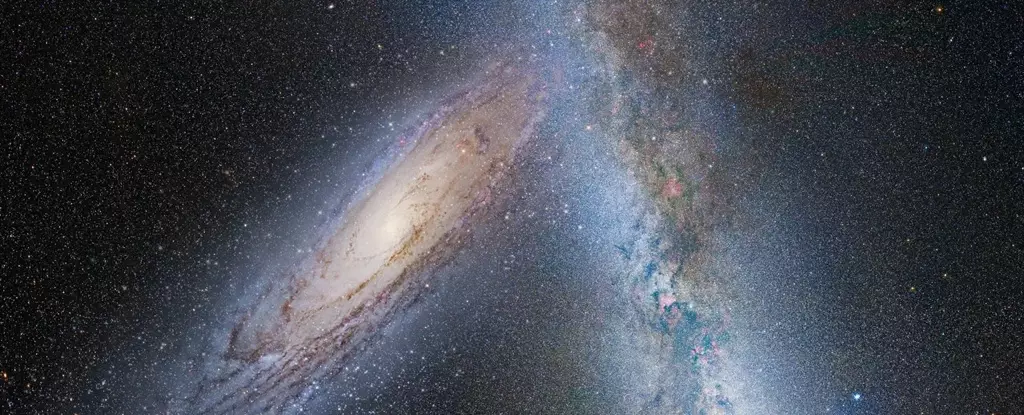Andromeda, the closest major galaxy to our Milky Way, is on a collision course with our galaxy at a speed of about 110 kilometers (68 miles) per second. While this may sound alarming, the two galaxies are still about 2.5 million light-years away from Earth, giving us billions of years before any potential collision. Previous studies have suggested that a collision between the Milky Way and Andromeda is inevitable, but a new study challenges this notion, indicating that there is a 50/50 chance of a collision occurring within the next 10 billion years.
Researchers from the University of Helsinki and Durham University used data from the Gaia and Hubble space telescopes to analyze the movements of the Milky Way, Andromeda, the Large Magellanic Cloud, and the Triangulum Galaxy. When considering different combinations of these galaxies in simulations, the probability of a Milky Way-Andromeda collision varied. In some scenarios, the chances of a collision were as high as two-thirds, while in others, the likelihood dropped to just one-third. When all four galaxies were included in a simulation, a merger between the Milky Way and Andromeda was predicted to occur just over 50 percent of the time.
While the idea of galaxies colliding may seem catastrophic, the reality is less dramatic. The timescale for such an event is extremely long, with the Sun expected to die in about 5 billion years, long before any potential collision. Even if a collision were to occur, the vast empty spaces within galaxies mean that it is unlikely for two stars to physically collide. Instead, their gravitational interactions would lead to changes in their orbits, potentially resulting in the formation of new stars and a transformation of the galaxies’ shapes into a giant elliptical galaxy nicknamed “Milkomeda.”
Despite previous predictions of an imminent collision between the Milky Way and Andromeda, the new study highlights the uncertainty surrounding the future of these galaxies. While some outcomes point towards a merger, others suggest that the galaxies may simply pass each other by and continue their individual evolution. The lack of certainty underscores the need for further research, including upcoming data releases from the Gaia mission, to gain a clearer understanding of the fate of the Milky Way and Andromeda. Ultimately, the future evolution of the Local Group remains uncertain, with possibilities ranging from a galactic collision to the survival of both galaxies in their current form.
The fate of the Milky Way and Andromeda remains uncertain, with potential outcomes ranging from a collision to a peaceful coexistence. While the idea of galaxies merging may sound apocalyptic, the reality is that such events occur over timescales far longer than human existence. Continuing research and observations will be crucial in shedding light on the future of these galaxies and the broader understanding of galactic evolution.


Leave a Reply